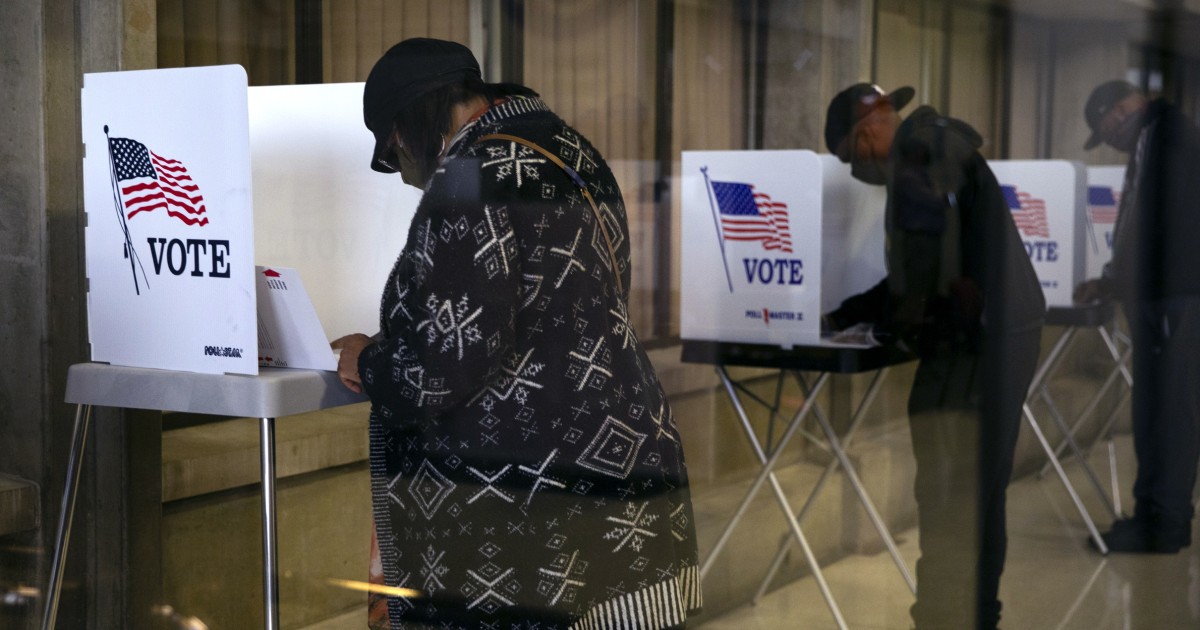
Supporters of President Joe Biden and former President Donald Trump are sharply divided across all sorts of lines, including the sources they rely on to get their news, new data from the NBC News poll shows.
Biden is the clear choice of voters who consume newspapers and national network news, while Trump does best among voters who don’t follow political news at all.
The stark differences help highlight the strategies both candidates are using as they seek another term in the White House — and shed some light on why the presidential race appears relatively stable.
The poll looked at various forms of traditional media (newspapers, national network news and cable news), as well as digital media (social media, digital websites and YouTube/Google). Among registered voters, 54% described themselves as primarily traditional news consumers, while 40% described themselves as primarily digital media consumers.
Biden holds an 11-point lead among traditional news consumers in a head-to-head presidential ballot test, with 52% support among that group to Trump’s 41%. But it’s basically a jump ball among digital media consumers, with Trump at 47% and Biden at 44%.
And Trump has a major lead among those who don’t follow political news — 53% back him, and 27% back Biden.
“It’s almost comic. If you’re one of the remaining Americans who say you read a newspaper to get news, you are voting for Biden by 49 points,” said Republican pollster Bill McInturff, who conducted the poll alongside Democratic pollster Jeff Horwitt.
The trends also extend to other questions in the poll. There’s a significant difference in how traditional news consumers view Biden, while digital news consumers are far more in line with registered voters overall.
More primarily traditional news consumers have positive views of Biden (48%) than negative ones (44%). Among primarily digital news consumers, 35% view Biden positively, and 54% view him negatively. Vice President Kamala Harris’ positive ratings show a similar divide, while Trump is viewed similarly by news consumers of both stripes.
And although the sample size is small, those who don’t follow political news feel more positively about Trump and independent presidential candidate Robert F. Kennedy Jr. and more negatively about Biden.
Trump’s lead among those not following political news caught Horwitt’s eye amid Trump’s trial on charges related to allegations he paid hush money to quash news of an alleged affair from coming out during the heat of his 2016 presidential campaign and as he faces legal jeopardy in other cases that consistently make news.
“These are voters who have tuned out information, by and large, and they know who they are supporting, and they aren’t moving,” Horwitt said.
“That’s why it’s hard to move this race based on actual news. They aren’t seeing it, and they don’t care,” he continued.
Third-party candidates also do well with this chunk of the electorate — a quarter of the 15% who say they don’t follow political news choose one of the other candidates in a five-way ballot test that includes Kennedy, Jill Stein and Cornel West. Third-party supporters also make up similar shares of those who say they get their news primarily from social media and from websites.
But voting behavior among those groups suggests that Biden’s stronger showing with those traditional media consumers puts him ahead with a more reliable voting bloc.
Of those polled who could be matched to the voter file, 59% of those who voted in both 2020 and 2022 primarily consume traditional media, 40% primarily consume digital media, and just 9% don’t follow political news. (The percentages add up to more than 100% because some people chose media platforms across multiple categories.)
Those who voted less frequently were more likely to say they don’t follow political news: 19% of those who voted in the last presidential election but not in 2022 and 27% who voted in neither of the last two elections say they don’t follow political news.
The NBC News poll of 1,000 registered voters nationwide — 891 contacted via cellphone — was conducted April 12-16, and it has an overall margin of error of plus or minus 3.1 percentage points.






